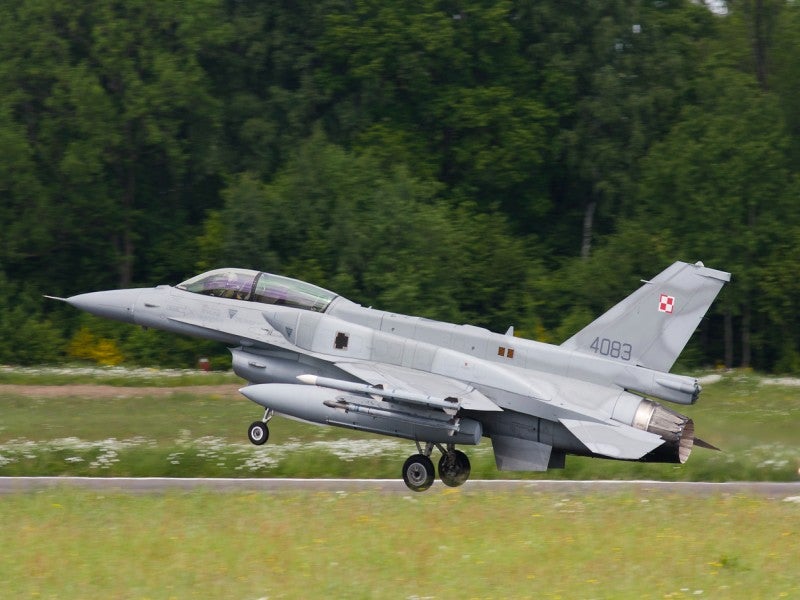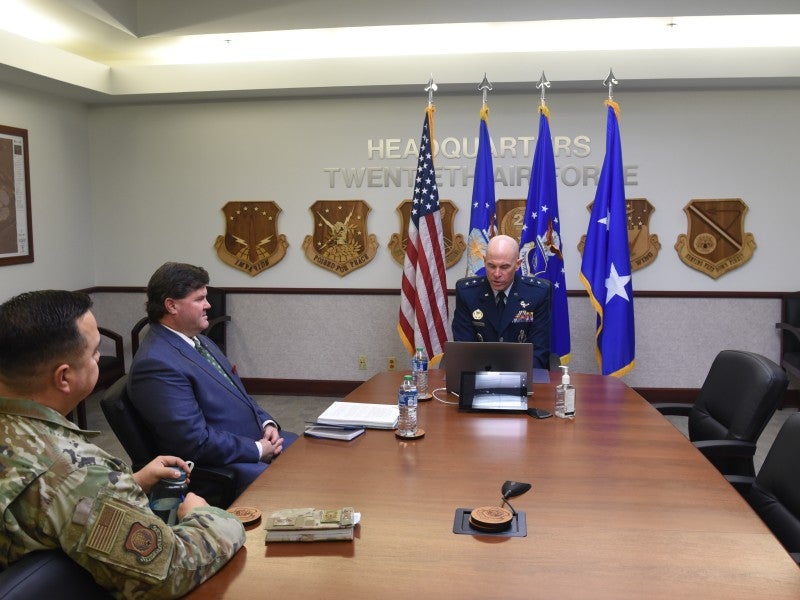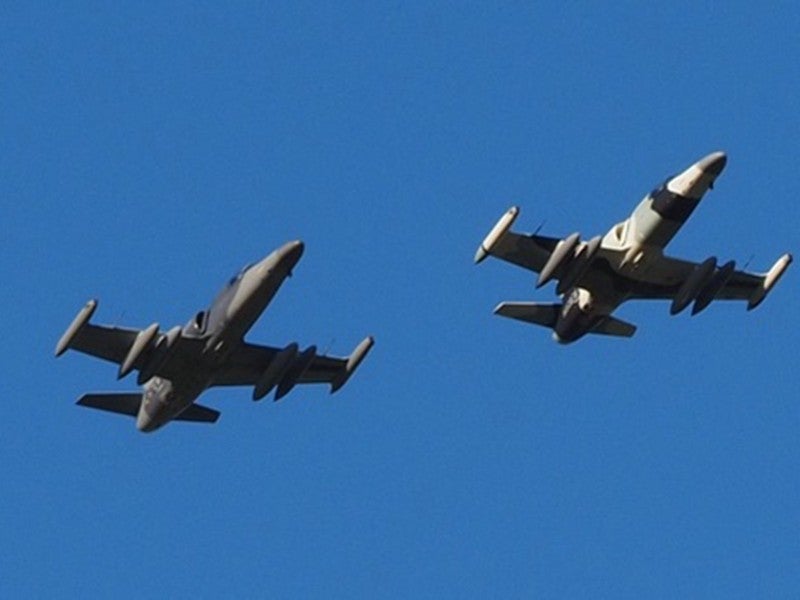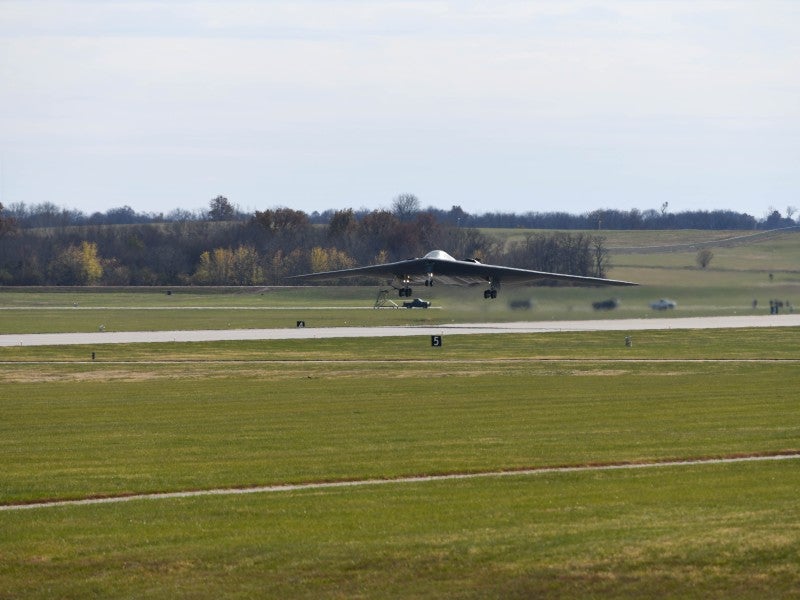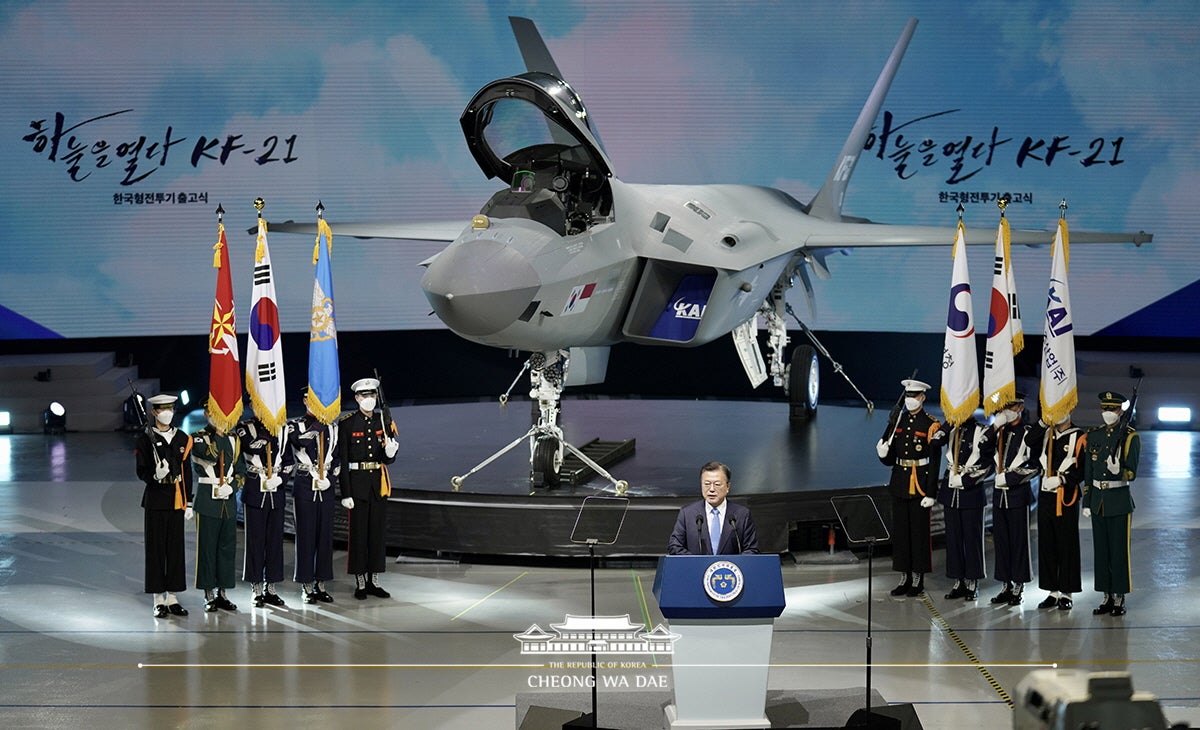
South Korea has officially unveiled a prototype of its new, indigenously-built, KF-X fighter that will eventually replace the country’s F-4D/E Phantom II and F-5E/F Tiger II aircraft.
At a ceremony attended by South Korean President Moon Jae-in at Korea Aerospace Industries (KAI) Sacheon headquarters it was announced the jet would enter service as the KF-21 Boramae.
Moon Jae-In called the unveiling of the aircraft the “opening of a new era” according to Yonhap. Flight tests of the fighter are slated to begin in 2022. Under current plans, 40 fighters are set to be in service by 2028 with a further 80 to be delivered by 2032.
The launch was also attended by the Indonesian Defence Minister Prabowo Subianto, Indonesia is stumping up 20% of the programme’s costs and is expected to receive a total of 50 fighters, however, reports have said Jakarta is looking to renegotiate its commitment to the programme.
In a press release carried by the Indonesian Ministry of Defence, Indonesian President Jokowi congratulated South Korea on the progress and added he hopes for the success of the prototype and its ‘positive’ benefits for defence cooperation between the two countries.
Royal United Services Institute (RUSI) research fellow and editor of RUSI Defence Systems Justin Bronk told Air Force Technology that South Korea’s reasoning behind developing a domestic fighter jet was similar to Turkey with its TF-X project and India’s ‘Tejas and putative AMCA.’
The countries, he said, are looking to develop their own fighters having seen the profitability and strategic utility of the domestic military aerospace industries of established suppliers like the UK, France, Russia and US.
South Korea’s KF-X has been dubbed a 4.5 generation fighter and takes design cues from the US F-22, however, the South Korean jet in its current design carries weapons and fuel pods externally rather than in an internal carriage.
This means that while the airframe itself may be an attempt at a ‘low-observable’ design, ‘no meaningful measure of low-observability’ can be obtained due to the external fuel and weapons, Bronk said.
The fighter jet features a locally-produced Active Electronically Scanning Array (AESA) radar.
Bronk added: “For South Korea, the policy is one step at a time, with future developments of the KF-X intended to feature internal carriage only – but this seems likely to prove a false economy as it does reduce cost up front but will greatly increase the costs of future upgrade efforts due to the scope of airframe – and FCS – redesign required and prevent many of the operational benefits of fifth-generation from being realised in the initial product.”
While the programme marks a significant step in the country’s capability to develop and build military aircraft, the effort comes alongside significant investment from South Korea in the F-35 programme and the country also a ‘very modern fleet’ of F-15K Slam Eagles which are due to serve into the 2040s.
Commenting on the unveiling in a statement, South Korea’s Defense Acquisition Program Administration as reported by Reuters said: “The release of the prototype can be seen as a meaningful achievement of the development process in that it enters the stage of realising and evaluating the performance of fighters that have existed only as drawings.”
According to a transcript, President Moon added that the development of the fighter meant ‘a new era of independent defence has begun.’
President Moon added: “It’s a big advantage to have a domestic fighter. We can build and put it into action whenever we need. Parts can be replaced and repaired at any time.
“The advanced avionics technology, including the AESA radar, can also be applied to upgrade existing fighters such as the ‘KF-16′ and’F-15K’.”
Bronk added that these two factors meant the KF-X was not an alternative to buying off-the-shelf aircraft but rather was an ‘additional line of effort.’
Bronk added: “As ever when assessing early-stage ‘fifth generation’ fighter programmes it is vital to remember; it is comparatively easy to build something that looks and flies a bit like an F-22 or F-35.
“It is astonishingly complex, expensive and technologically challenging to build something that actually works like one is supposed to.”


